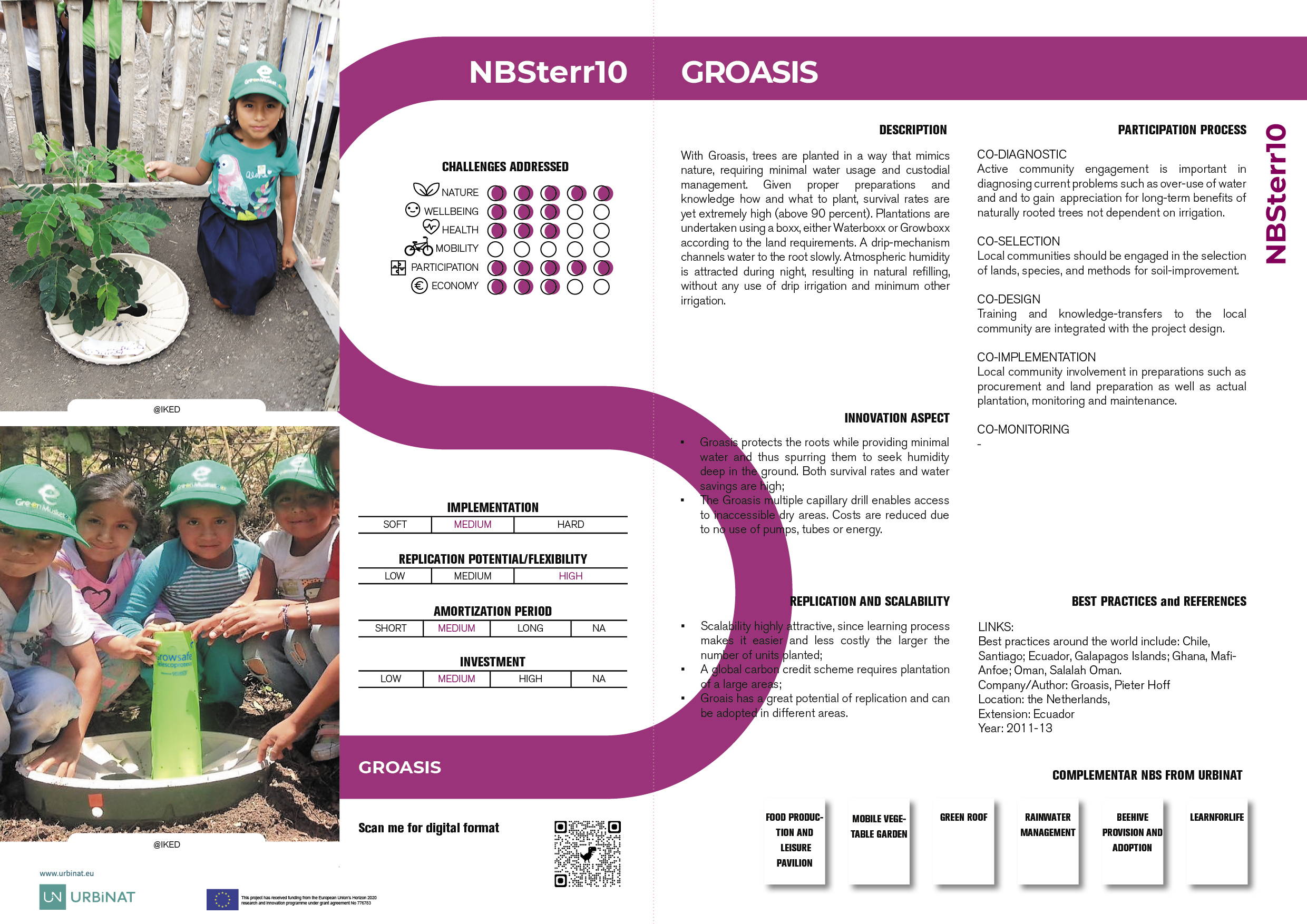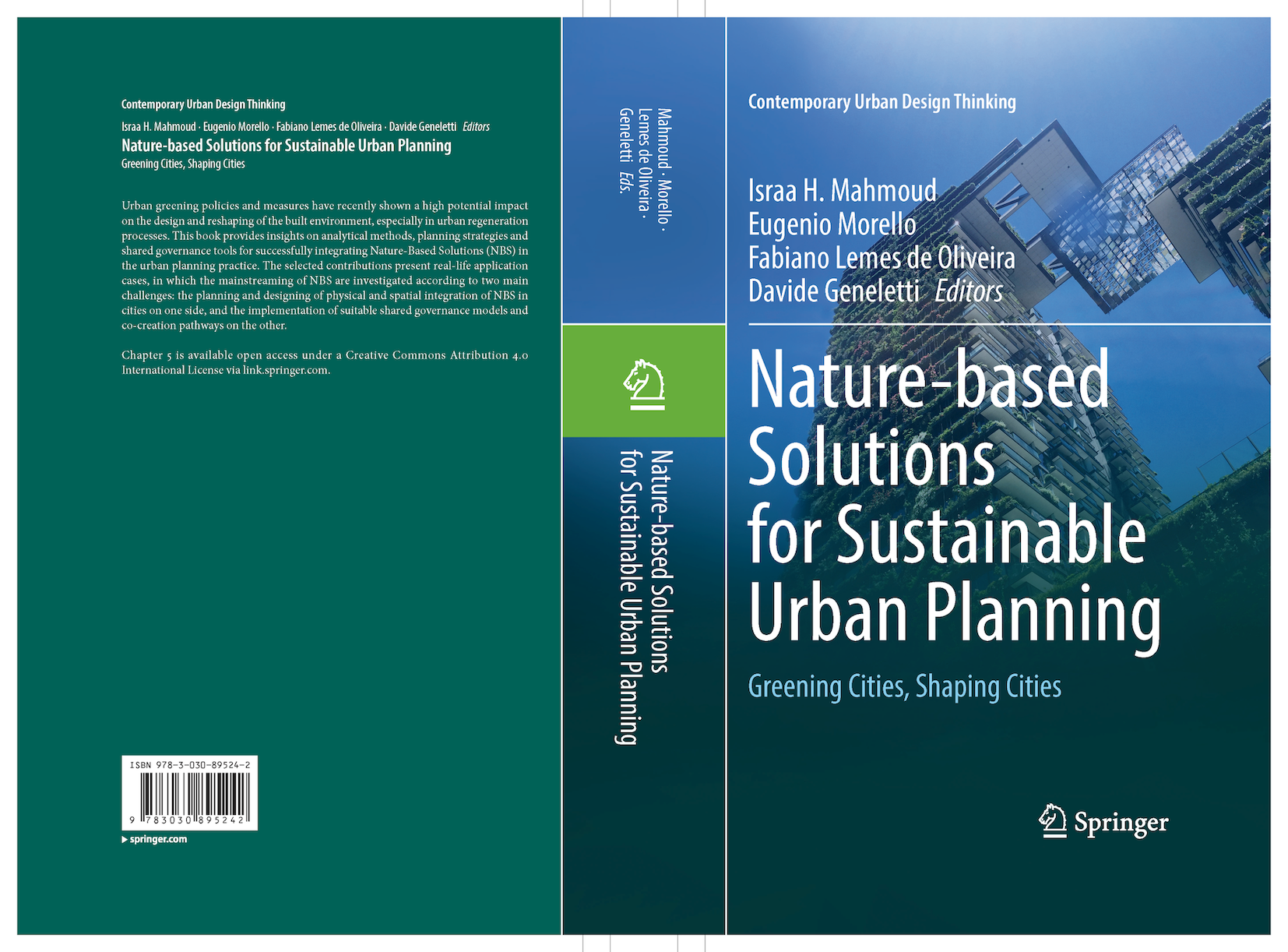Tree Planting Solution - Groasis
CHALLENGES ADDRESSED
Score impact
Nature
Wellbeing
Health
Mobility
Participation
Economy
DESCRIPTION
With Groasis, trees are planted in a way that mimics nature, requiring minimal water usage and custodial management. Given proper preparations and knowledge how and what to plant, survival rates are yet extremely high (above 90 percent). Plantations are undertaken using a boxx, either Waterboxx or Growboxx according to the land requirements. A drip-mechanism channels water to the root slowly. Atmospheric humidity is attracted during night, resulting in natural refilling, without any use of drip irrigation and minimum other irrigation.
The Groasis system mimics mother nature in the way trees are planted. The seedling is placed carefully in the ground while protected by a box which supports its root using minimal water which is supplied through a simple drip mechanism. This means the root stays alive but is “starved” of waterby, and thereby naturally induced to seek humidity in the deep. This stands in sharp contrast to standard irrigation practices whereby the root stays close to the surface in order to receive “human” support.

[PDF Download] Groasis
With Groasis, trees are planted in a way that mimics nature, requiring minimal water usage and custodial management. Given proper preparations and knowledge how and what to plant, survival rates are yet extremely high (above 90 percent). Plantations are undertaken using a boxx, either Waterboxx or Growboxx according to the land requirements. A drip-mechanism channels water to the root slowly. Atmospheric humidity is attracted during night, resulting in natural refilling, without any use of drip irrigation and minimum other irrigation.
INNOVATION ASPECT
- Groasis protects the roots while providing minimal water and thus spurring them to seek humidity deep in the ground. Both survival rates and water savings are high;
- The Groasis multiple capillary drill enables access to inaccessible dry areas. Costs are reduced due to no use of pumps, tubes or energy.
REPLICATION AND SCALABILITY
- Scalability highly attractive, since learning process makes it easier and less costly the larger the number of units planted;
- A global carbon credit scheme requires plantation of a large areas;
- Groais has a great potential of replication and can be adopted in different areas.
PARTICIPATION PROCESS

-
1
CO-DIAGNOSTIC
Active community engagement is important in diagnosing current problems such as over-use of water and and to gain appreciation for long-term benefits of naturally rooted trees not dependent on irrigation.
-
2
CO-SELECTION
Local communities should be engaged in the selection of lands, species, and methods for soil-improvement.
-
3
CO-DESIGN
Training and knowledge-transfers to the local community are integrated with the project design.
-
4
CO-IMPLEMENTATION
Local community involvement in preparations such as procurement and land preparation as well as actual plantation, monitoring and maintenance.
Best Practices & References
URBiNAT Researchers
LINKS:
Best practices around the world include: Chile, Santiago; Ecuador, Galapagos Islands; Ghana, MafiAnfoe; Oman, Salalah Oman.
Company/Author: Groasis, Pieter Hoff Location: the Netherlands, Extension: Ecuador Year: 2011-13






